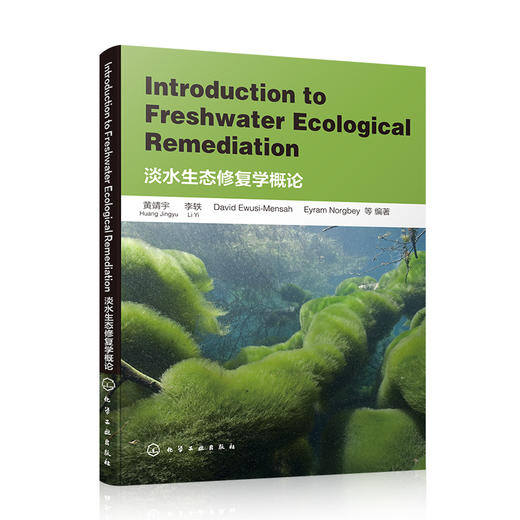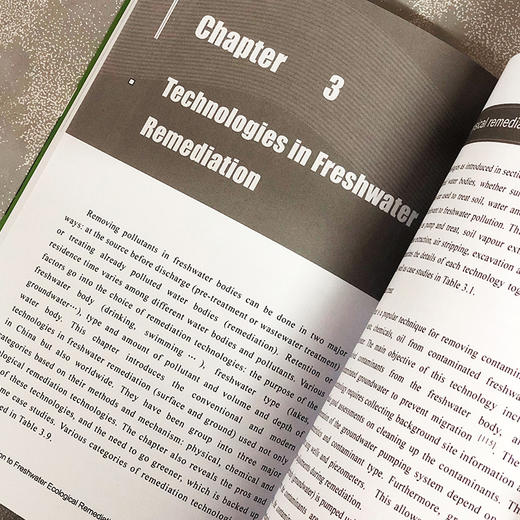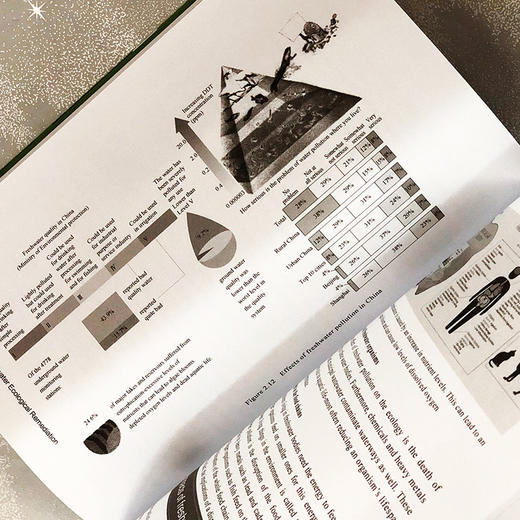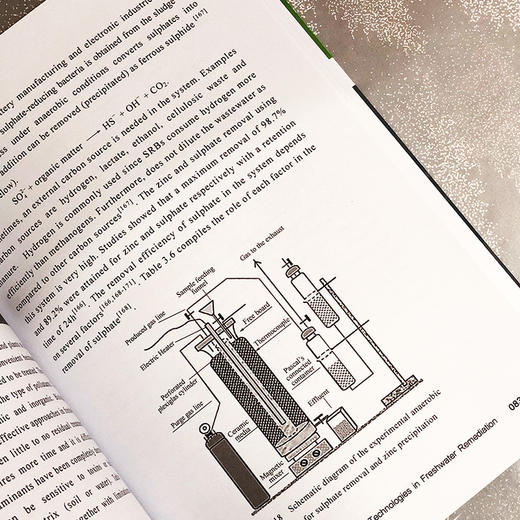Introduction to Freshwater Ecological Remediation(淡水生态修复学概论)
| 运费: | ¥ 0.00-20.00 |
商品详情

前言:
"Freshwater plays a crucial role in the health, well-being and livelihood of everyone in the world. It drives a country?s economy, integral to its ecosystems, serves as a recreation and is utilized in diverse ways. China?s freshwater resources are under pressure in terms of quality (pollution) and quantity (scarcity). The country no longer has adequate and clean water to meet all needs considering China?s population and total land area. The decline in the quality of water in China is a major economic, social and environmental problem. This is mainly due to the rapid infrastructure development of the country, industrial and agriculture activities. Freshwater in China and in the world is subject to greater competition than ever before. This book discusses the freshwater problems in the world with an emphasis on China?s status and how they can be solved through remediation technologies.
Introduction to Freshwater Ecological Remediation is an introduction of freshwater pollution and remediation technologies. It also provides an explanation of freshwater ecological remediation. The book offers anyone studying and interested in the components of water bodies worldwide (and in China), an essential understanding of major pollutants environmental engineers are battling with and the limitations in existing remediation technologies. It covers the entire breadth of the remediation technologies, providing concise, non-technical explanations of their mechanisms and processes. The book is divided into 5 independent chapters.
Chapter 1 introduces the aim/intention of the whole book by defining the main concepts and keywords in the book. They are freshwater, ecology, ecosystem, remediation and freshwater ecological remediation. The chapter continues with a detailed description of the statistics of the earth’s water distribution. It must be noted that the distribution of the earth’s water is uneven. In addition, the chapter describes the distribution and major freshwater bodies in Asia and China.
Our freshwater bodies are limited resources thus needs to be protected. In Chapter 2, we describe the types, sources of pollutants and contaminants that destroy the freshwater bodies. The health, economic and ecological impacts of polluted water are very catastrophic. The book provides past, present and future implications on the impact of polluted water. The impact of polluted water bodies on climate change and the environment is further discussed. The chapter continues to describe the freshwater quality parameters for water bodies. We conclude the chapter by describing the importance of remediation freshwater development. This chapter sets up the stage for Chapter 3, which introduces the various technologies in freshwater remediation.
Chapter 3 introduces the conventional and modern technologies in freshwater remediation (surface and ground) not only used in China but also worldwide. These technologies have been grouped into three major categories based on their methods and mechanism: physical, chemical and biological remediation technologies. The chapter also reveals the pros and cons of these technologies as well as their limitations, and the need to go greener, which is backed up with some case studies. Various categories of remediation technologies are summarized in a table at the end of the chapter.
Chapter 4 outlines case studies of modern green technologies in freshwater remediation and management used in various countries. We discussed case studies from the various continents including Asia (with emphasis on China), Europe, Africa and America.
Finally, Chapter 5 describes the future perspective of using wastewater, freshwater and the environment. Furthermore, it introduces environmentally friendly models on how to use wastewater as a resource, ways of protecting the freshwater bodies and the use of water for recreation.
This book, therefore, provides up to date information on water remediation technologies and is essential to everyone since we all have a role to play in maintaining our freshwater bodies. The content is very essential and provide baseline information for scientists and students in the field of environmental ecology, bioremediation, wastewater treatment processes, desalination technologies, water resource and recreation and many others.
The author and co-authors have made significant contributions to both international and local SCI/EI journals in the field of environmental science and engineering especially wastewater treatment technologies.In addition, they have also edited or co-edited seven scientific publications in similar disciplines.
Huang Jingyu
February 2019
目录:
"Chapter 1 Introduction / 001
1.1 Freshwater / 002
1.1.1 Ecology and ecosystem / 002
1.1.2 Remediation / 002
1.1.3 Freshwater ecological remediation / 003
1.2 World freshwater and water distribution / 003
1.3 Freshwater bodies, sources and distributions in China / 009
1.3.1 Freshwater bodies in China / 009
1.3.2 Distribution of freshwater across China / 013
Review questions / 015
Chapter 2 Causes, Effects and Remediation of Freshwater Pollution / 016
2.1 Pollution and contamination in freshwater bodies / 017
2.1.1 Contamination / 017
2.1.2 Pollution / 018
2.1.3 Classification of pollutants / 020
2.1.4 Eutrophication/ Nutrient influence / 022
2.2 Causes of freshwater pollution in China / 023
2.3 Effects of freshwater pollution / 031
2.3.1 Health / 031
2.3.2 Economic / 033
2.3.3 Ecological / 033
2.4 Impacts of freshwater pollution / 035
2.4.1 Climate change / 036
2.4.2 Climate change on lakes / 038
2.5 Importance of remediation in freshwater development / 039
2.5.1 Clean water is important for our health / 039
2.5.2 Water supports our unique ecosystems / 040
2.5.3 Water provides us with food to eat / 040
2.5.4 Water helps people make a living / 040
2.5.5 Water keeps power running / 040
2.5.6 Water for recreation / 041
2.6 Types of remediation used in freshwater pollution control / 041
2.6.1 Physical remediation / 042
2.6.2 Chemical remediation / 042
2.6.3 Bio-remediation / 042
2.7 Freshwater quality parameters / 043
2.7.1 Dissolved oxygen / 045
2.7.2 pH / 046
2.7.3 Temperature / 046
2.7.4 Water density (Thermal stratification) / 047
2.7.5 Water depth / 048
2.7.6 Nutrient levels / 048
2.7.7 Algae concentration (Chl-a), phytoplankton and chlorophyll / 048
2.7.8 Total phosphorus and total Nitrogen / 050
2.7.9 Precipitation / 050
2.7.10 Total dissolved solids / 050
2.7.11 Total suspended solids / 051
2.7.12 Turbidity / 051
Review questions / 052
Chapter 3 Technologies in Freshwater Remediation / 054
3.1 Physical remediation / 055
3.1.1 Pump and treat / 055
3.1.2 Soil vapour extraction and air sparging / 056
3.1.3 Slurping/ Dual-phase extraction / 059
3.1.4 Air stripping / 060
3.1.5 Excavation / 062
3.1.6 Electrical resistance heating (ERH) / 063
3.1.7 Other techniques / 063
3.2 Chemical remediation / 065
3.2.1 In situ chemical oxidation (ISCO) / 066
3.2.2 Chemical precipitation remediation / 067
3.2.3 Ion exchange / 070
3.2.4 Chemical immobilization stabilization and solidification / 071
3.2.5 Chemical adsorption / 072
3.2.6 Heterogeneous catalysis / 075
3.2.7 Others / 079
3.3 Biological (Bio-) remediation / 082
3.3.1 Bioremediation of inorganic pollutants / 082
3.3.2 Bioremediation of organic pollutants / 091
3.3.3 Others / 098
Review questions / 101
Chapter 4 Case Studies (Modern technologies) / 102
4.1 Asia / 102
4.1.1 Rice hydroponic biofilter in a pond-scale aquaponics recirculating system (China) / 102
4.1.2 Black / Odorous water (China) / 103
4.1.3 Sponge city (China) / 104
4.1.4 Ecosystem activation system (EAS) (China) / 105
4.1.5 Methane production from wastewater treatment (China) / 107
4.1.6 Water treatment with UV light (Tianjin, Northeast China) / 109
4.1.7 Modern wastewater treatment plant (Qingdao, China) / 109
4.1.8 Erhai Lake, protection and remediation policies (Yunnan Province, China) / 111
4.1.9 Qinghe wastewater treatment plant (Beijing, China) / 113
4.1.10 South-to-North water diversion project (Baiyang Lake,China) / 114
4.1.11 Sediment remediation (China) / 114
4.2 Europe / 116
4.2.1 Smart city (France) / 116
4.2.2 iMetland (Spain) / 117
4.2.3 Advanced membrane technology (Israel) / 120
4.2.4 Advanced nanotechnology / 121
4.2.5 Urine separating process / 122
4.2.6 SaltGae project / 123
4.3 Africa / 125
4.4 America / 126
4.4.1 Micro electrochemical technology METs (USA) / 126
4.4.2 Membrane filtration technologies (USA) / 128
4.4.3 Phytoremediation using Azolla (USA) / 129
4.4.4 Eutrophication and In-Lake remediation treatments (Canada and USA) / 130
4.5 Others / 131
Chapter 5 Future Prospects in Freshwater Ecosystem Management / 132
5.1 Wastewater as a resource / 132
5.2 The relevance of freshwater protection / 134
5.3 Water recreation / 137
5.4 Possible future approach / 139
5.5 Policies and models / 140
5.5.1 Conservation International (CI) “Payment for Ecosystem Services” / 140
5.5.2 World Estuary Alliance (WEA) / 141
5.5.3 The Yangtze Forum/Yangtze Conservation & Development Report / 141
5.5.4 Wetland Conservation Network / 141
5.5.5 Integrated water resource management (IWRM) / 142
5.5.6 China’s new water policy / 144
Abbreviation / 146
References / 149
- 化学工业出版社官方旗舰店 (微信公众号认证)
- 扫描二维码,访问我们的微信店铺
- 随时随地的购物、客服咨询、查询订单和物流...















